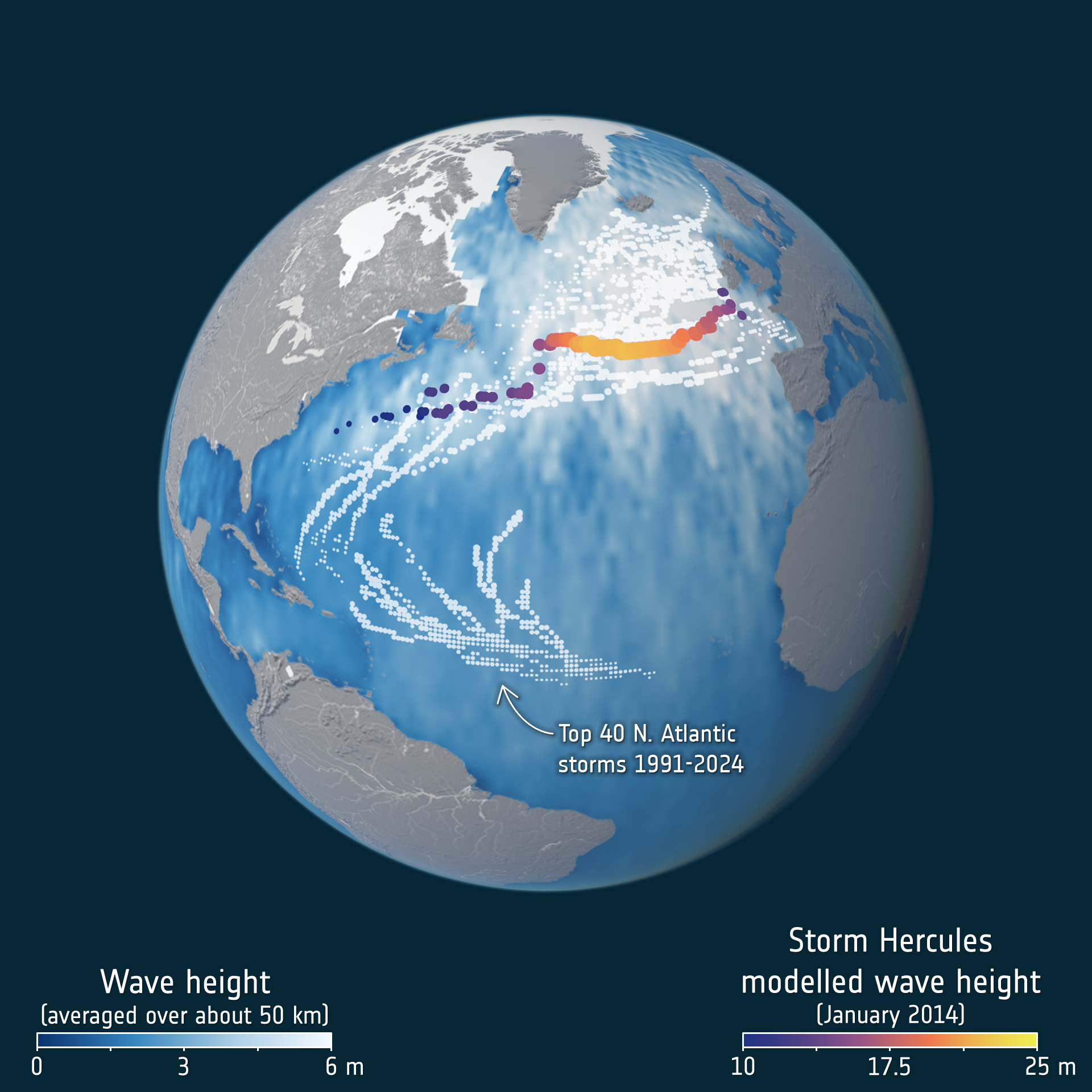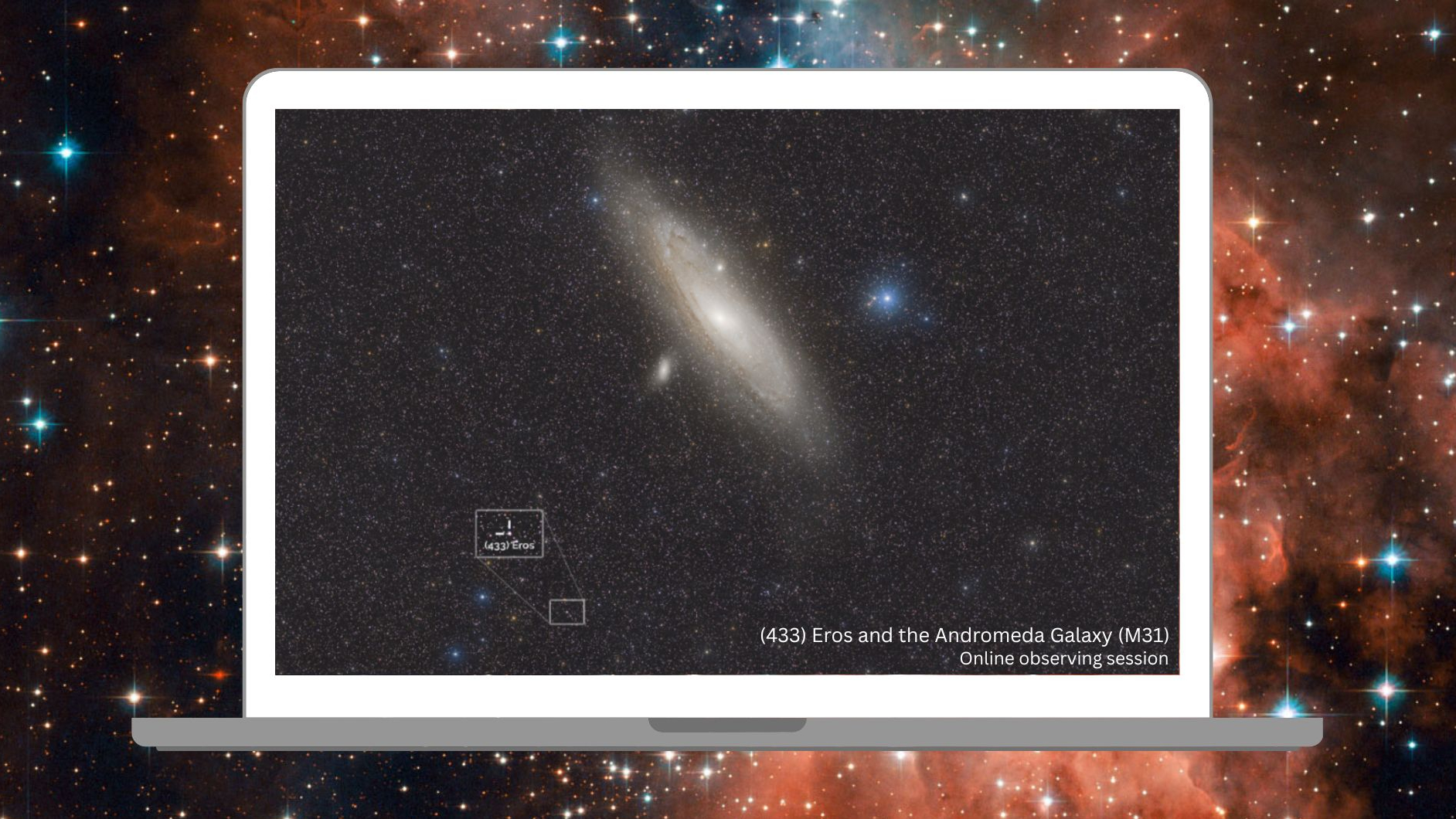Satellites watch as record-breaking ocean waves carry a storm's power across the sea
Satellite data from the SWOT mission reveals how massive waves act as storm "messengers," carrying a storm's power across entire oceans.

Satellites recorded the largest ocean swells ever seen from space, highlighting how massive waves can act as storm "messengers," carrying a storm's power across entire oceans.
Observations from the Surface Water and Ocean Topography (SWOT) mission allowed scientists to track waves born from powerful storms. These waves, driven by wind, generate swells that carry destructive energy to faraway shores — even if the storm itself never makes landfall.
Using SWOT's wide-swath imaging with radar altimetry data from Earth-observing satellites including SARAL, Jason-3, Copernicus Sentinel-3A and -3B, Copernicus Sentinel-6 Michael Freilich, CryoSat and CFOSAT, researchers were able to create a global picture of how storm waves move, merge and evolve as they spread outward across the planet, according to a statement from the European Space Agency (ESA).
One storm in particular — Storm Eddie, which formed over the North Pacific in December 2024 — served as a natural laboratory for the study. During the peak of the storm, satellites observed open-ocean waves reaching nearly 65 feet (20 meters), or roughly the height of the Arc de Triomphe in Paris. Those are the highest ever measured from space.

Over the following two weeks, those swells traveled more than 15,000 miles (24,000 kilometers), crossing the Drake Passage and entering the tropical Atlantic. Although the storm never made landfall, its waves reached distant coasts with surprising force, powerful enough in some cases to cause erosion and flooding.
Therefore, the ocean surface acts as a "messenger," the researchers said. By measuring the time between crests of large swells, also known as wave period, researchers are able to estimate a storm's size and strength. For example, a 20-second period means a large wave arrives every 20 seconds.
The study also revealed that shorter, high-energy storm waves — not just long, slow swells — carry much of the ocean's transported energy, challenging long-held assumptions about how wave power is distributed. That insight will help scientists refine global wave models and better protect coastal communities from related hazards.
Breaking space news, the latest updates on rocket launches, skywatching events and more!
Their findings were published Sept. 16 in the journal Proceedings of the National Academy of Sciences.

Samantha Mathewson joined Space.com as an intern in the summer of 2016. She received a B.A. in Journalism and Environmental Science at the University of New Haven, in Connecticut. Previously, her work has been published in Nature World News. When not writing or reading about science, Samantha enjoys traveling to new places and taking photos! You can follow her on Twitter @Sam_Ashley13.
You must confirm your public display name before commenting
Please logout and then login again, you will then be prompted to enter your display name.
